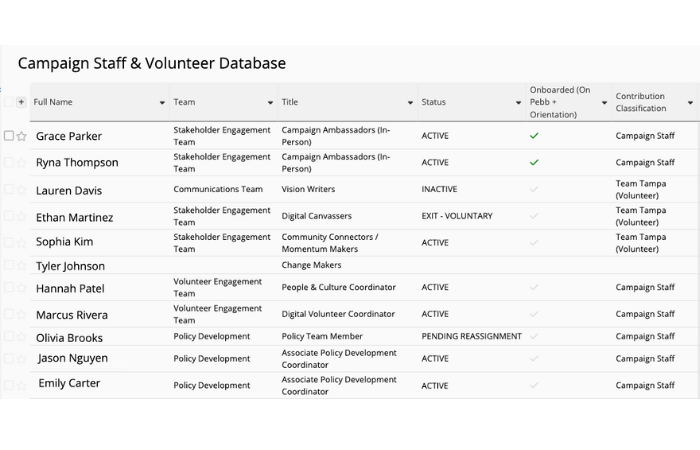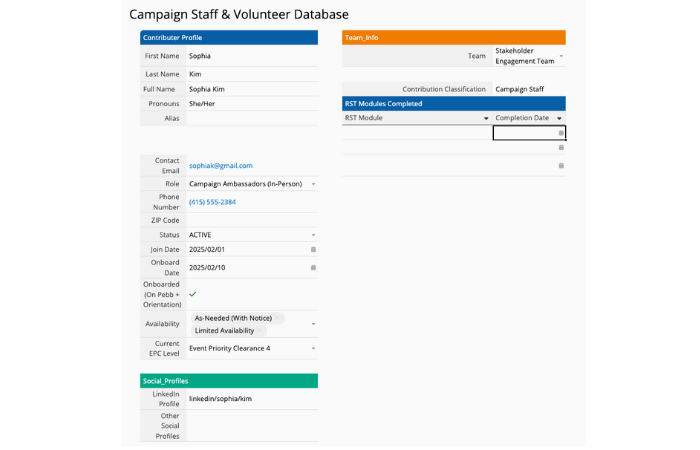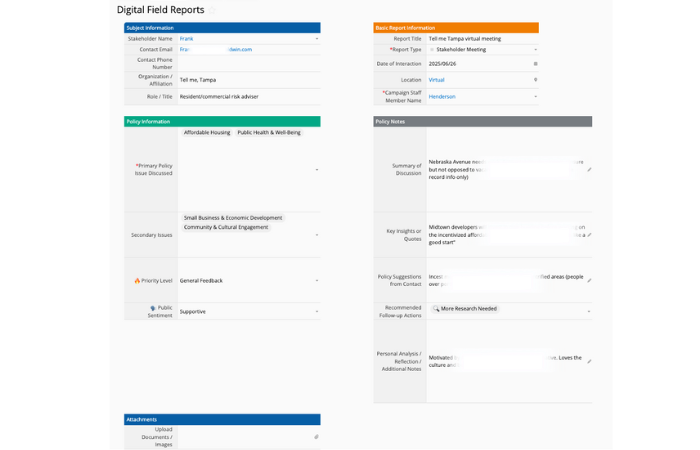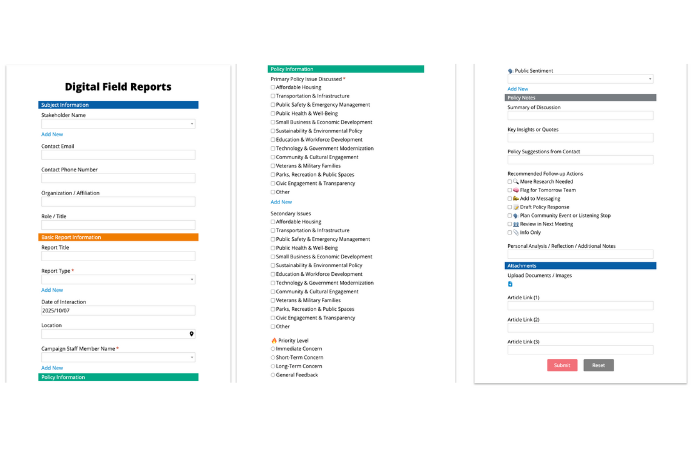Managing People and Policies: How Alan Henderson Runs His Political Campaign with Ragic

Background
Alan Henderson, a 24-year-old candidate in the 2027 Tampa mayoral race, is exploring a run for mayor and has said he aims to bring fresh energy, bold solutions, and inclusive leadership to the city he’s always called home. One of the ways he’s bringing that fresh energy and those bold solutions into his campaign is through the system he uses to manage his operations: Ragic.
Before entering politics, Henderson, as the CEO of Dilemma Esports, managed his e-sport company operations in Ragic, where he relied on Ragic to keep track of team members, events, and complex workflows. During that time, he also tried Notion, Airtable, and — of course — the all-too-familiar Google Sheets, but one thing he was looking for wasn’t there: versatility. He found that in Ragic in 2021.
When transitioning into politics, Henderson faced a familiar challenge: coordinating volunteers, collecting input from constituents, and maintaining organized records — all at scale. He brought in a system he was already familiar with, one that had already proven effective, and that could grow with the campaign and adapt to evolving needs. As he’s just starting out, with no political career following him, and might not know exactly what the campaign will require in the future, he leaned on the versatile system he’s used since 2021, Ragic.
So stacks of paper files and spreadsheets? Definitely not the energy he is bringing. Ragic is.
Using Ragic to Run a Political Campaign
1. Campaign Staff and Volunteer Database

Campaign Staff and Volunteer Database Sample Sheet Listing Page
Henderson uses a dedicated sheet in Ragic to record all his campaign volunteers. Each entry includes the key details needed — such as contact information, role, and availability.

Campaign Staff and Volunteer Database Sample Sheet Form Page
When an event comes up, he doesn’t need to scramble. He can simply filter the database by role (say, Photographer) and by availability to instantly see who’s ready to step in.
It may sound like a simple application, but in the middle of a fast-paced political campaign, this simplicity is crucial. Instead of guessing, digging through files, or juggling multiple communication channels, the team has a single, centralized hub where they can quickly find the right people at the right time.
2. Digital Field Reports
Henderson mentioned that capabilities to share sheets via a form looking style for people to fill in data has been a game changer for his operation. The simplicity of just opening a link, filling it in, without needing to log-in, and can be done on the go made it much faster and less intimidating for new users.
Once filled in, then the system will automatically update and store the data. For example, the Digital Field Reports Henderson uses to organize notes from stakeholder and community meetings. Whenever Henderson or his staff meet with someone in the community — a resident, business owner, or stakeholder — they fill out this form. It helps the campaign:
- Keep track of who they talked to
- Record what issues came up
- Note how people feel about policies
- Decide what to follow up on
- Store everything in one central system (instead of scattered notes or memory)
Attachments, links, and additional notes can also be added, making it easy to centralize all materials related to a conversation.

How Digital Field Report is stored in the system

How Digital Field Report Form is shared to be filled out
This setup helps the campaign avoid scattered notes or forgotten details. Instead of relying on memory or digging through email threads, staff can instantly pull up what was said, how the community felt, and what actions are needed next. Having this kind of organized, searchable system ensures that no community voice slips through the cracks.
Wrapping Up
A familiar tool, used in a completely different industry. It shows how adaptable systems like Ragic can be: if it can manage gamers, content creators, and brand partnerships, it can just as easily manage volunteers, stakeholders, and policy conversations.
A versatile tool like Ragic — even when the application looks simple — can have an amplified impact. The challenge is always the same: managing people, information, and processes. And in Henderson's case, Ragic became the system to handle it.
Category: Case Studies > Government



